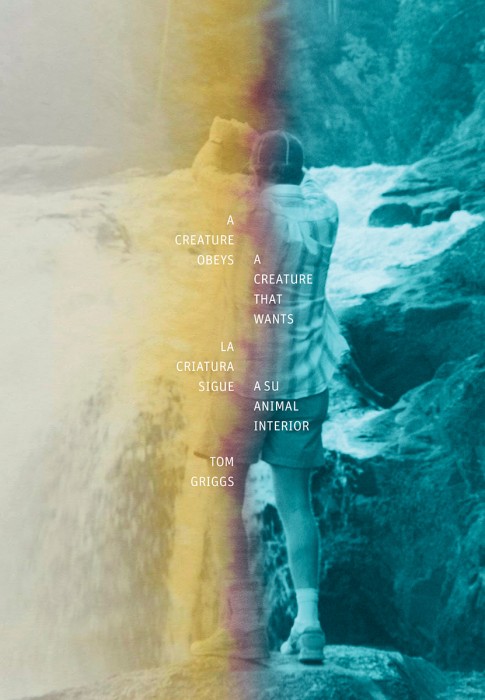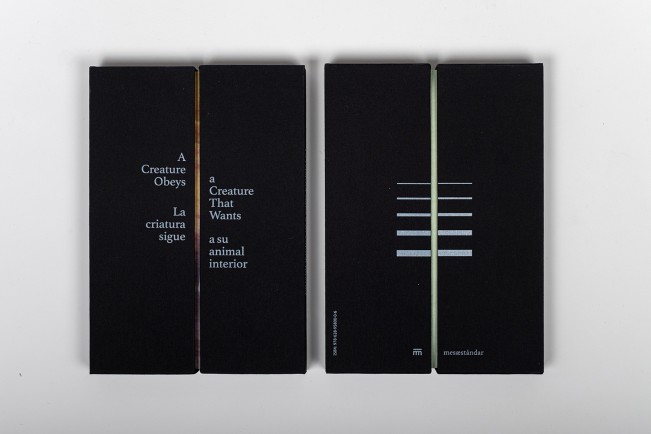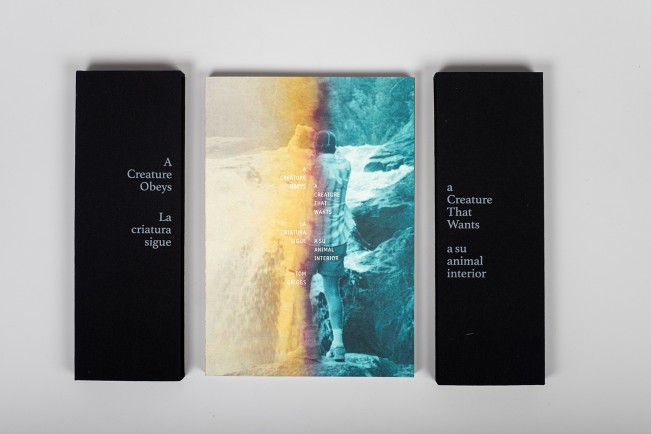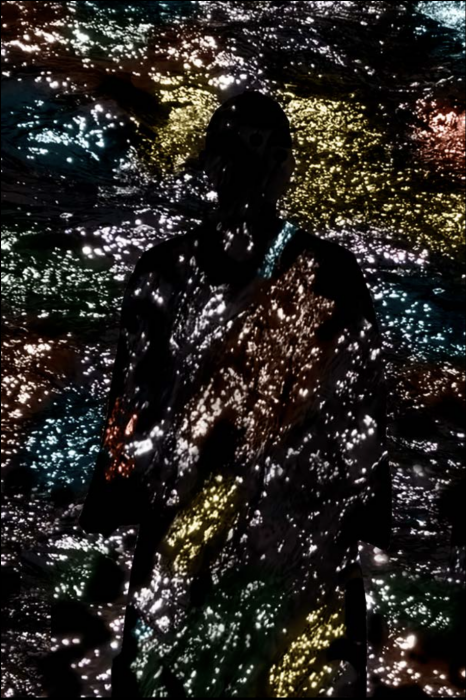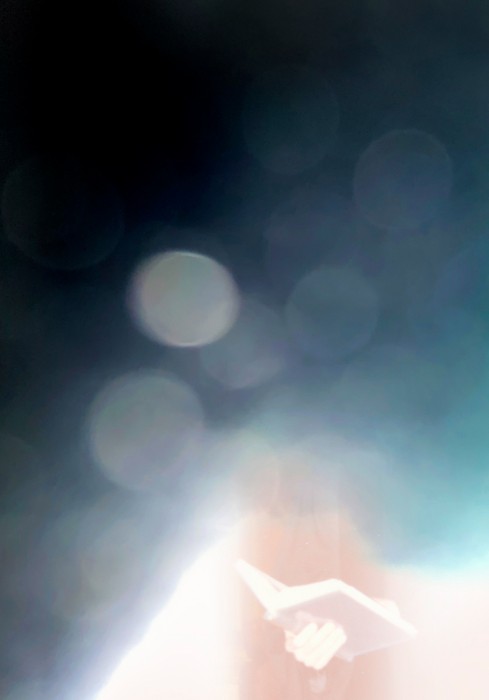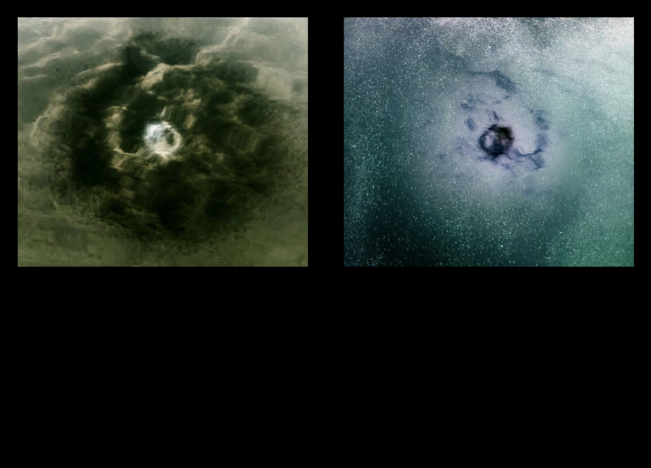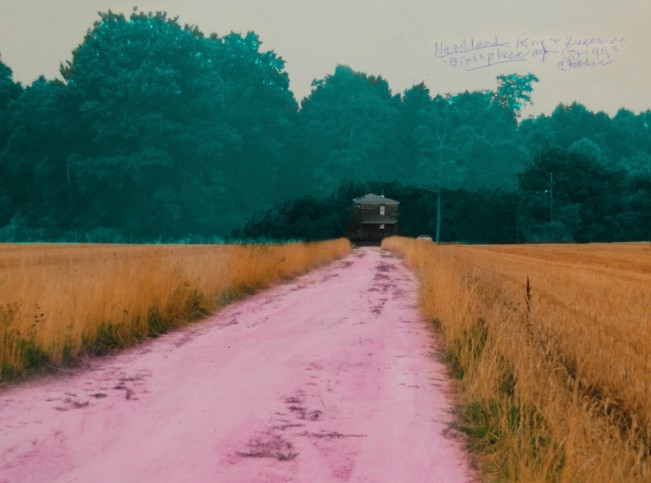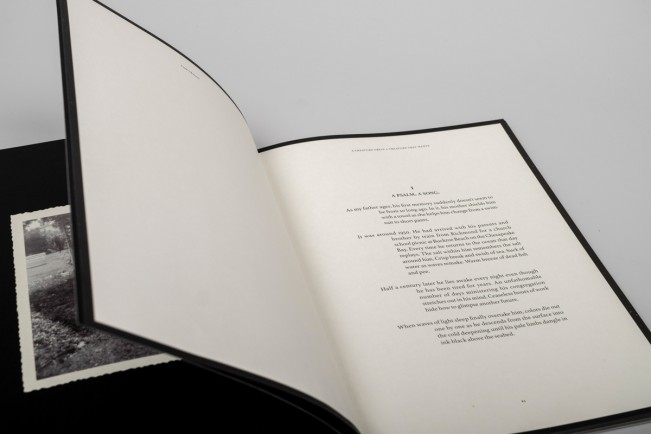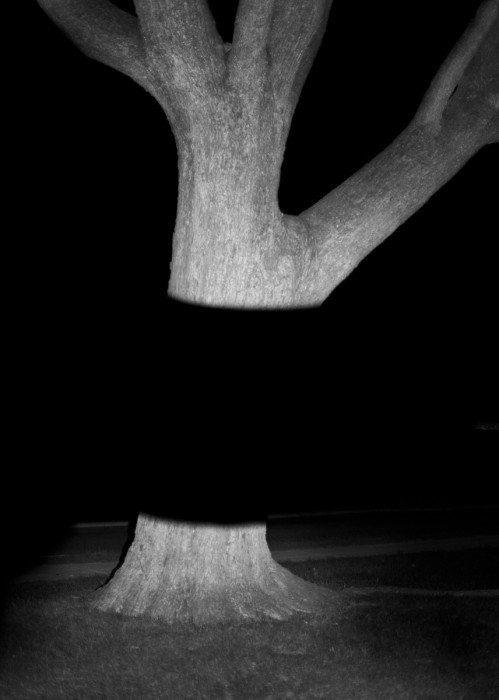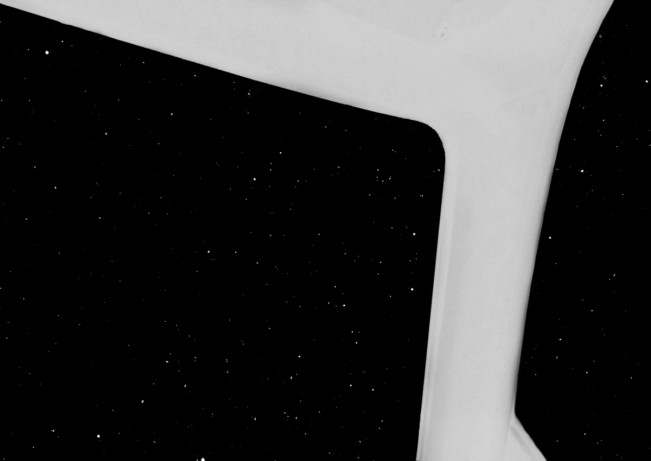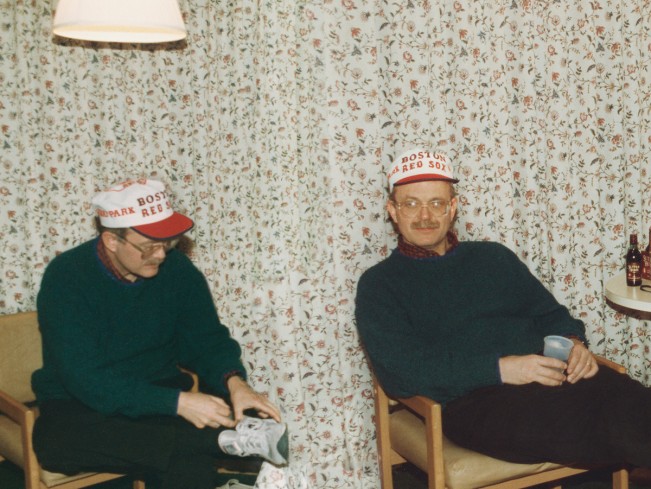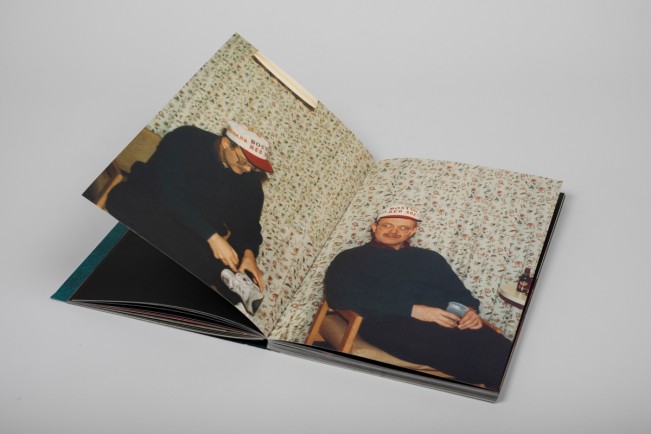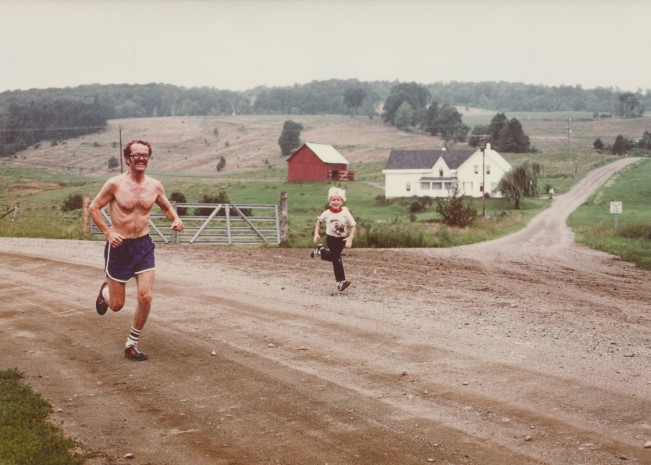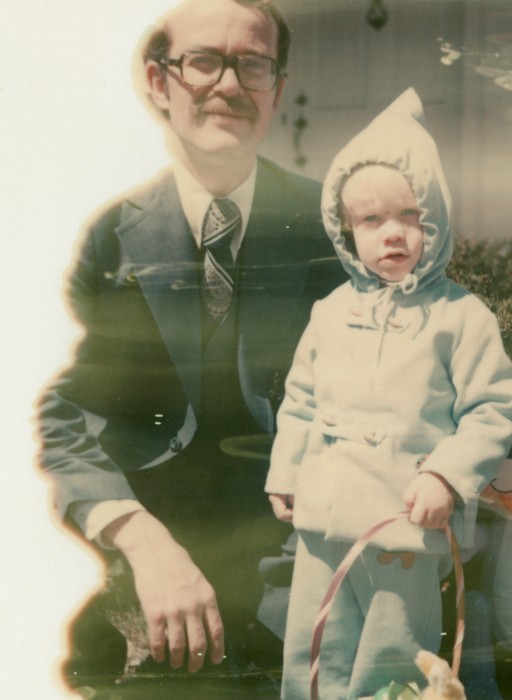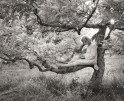Tom Griggs: A Creature Obeys a Creature That Wants
Tom Griggs‘s photo book, A Creature that Obeys a Creature that Wants (2023) chronicles his father’s battle with depression and the artist’s own reflections about inherited family patterns and dynamics. In 128 beautifully sequenced pages, the book ebbs and flows between light and darkness, guiding us through vast emotional and existential territories that invite us to reflect about the gradual loss of vitality of those closest to us.
An interview with the artist follows.
Editor’s Note: Griggs’ book was recently exhibited as an installation in Poland’s Fotofestiwal by curator Laura Carbonell and Chilean collaborator Sebastián Mejía in the exhibition Photobooks from Latin America alongside Andre Penteado, Celeste Rojas Mugica, Luis Carlos Tovar, and Rodrigo Claramonte. The exhibit included a survey of 70 photo books from more than ten Latin American countries, signifying an important curatorial foray into the current state of photo book publishing artists in the region today.
A Creature Obeys a Creature That Wants
A Creature Obeys a Creature That Wants tells the story of the author’s father who grew up in the heart of the conservative American South, transforming himself into a member of the counterculture during the late 1960s before becoming a minister. He settled into the Midwestern suburbs with his wife and two sons, his life a model of stability and comfort. Then the sleepless nights began.
He would wake drenched in sweat and spend the rest of the night cataloging inescapable predicaments. Darkness crept into his days. His heart rate soared as his weight dropped. Rushing began in his ears. The top of his visual field disappeared.
When the author’s own life hit turbulence at middle age, he began the process of understanding what had happened to his father. They began a series of conversations around living with mental illness, the roots of his father’s struggles with depression, and the family history of the disease.
Building from those conversations, the book explores how we understand our sense of self, in particular through the frames of family, religion, and depression. It looks at what can happen to us when the forces that shape us also unbalance us.
A Creature Obeys a Creature That Wants is a story told in creative nonfiction texts accompanied by family archival images, digital collage, handwritten notes, scanned documents, as well as the author’s photography.
Tom Griggs. Photographer, editor, educator, writer and curator living between Colombia and Mexico since 2010. His fourth photobook, A Creature Obeys a Creature That Wants, released by Mesa Estándar in late 2023, was named one of the year’s best by Mark Power and Alec Soth listed it as a book he’s spending time with in his year end review of photobooks.
He has exhibited his photographs internationally including exhibitions in New York, Berlin, London, Arles, Madrid and Belfast. His work can be found in the collections of the Museum of Modern Art, The Metropolitan Museum of Art, National Gallery, Centro de la Imagen in Mexico City, Amon Carter Center, Cleveland Museum of Art, Stanford University, Harvard University, The Wittliff Collection, The Free Library in Philadelphia, The Photo Library Collection in Dublin and La Biblioteca Pública Piloto in Medellín, among others. He has been a jury member for Critical Mass and The Gomma Photography Grant, as well as a nominator for The Prix Pictet, The Magnum Foundation Fund, BJP’s One’s to Watch and The Tim Hetherington Trust.
He was the founding editor of Fototazo, a non-profit organization that offered photography-related workshops and travel experiences for emerging Colombian photographers.
He currently works as an instructor at the International Center for Photography in New York. He has a master’s degree in photography from the Massachusetts College of Art and Design.
Follow on Instagram: @griggstom
Vicente Isaías: Tom, congratulations on your book! One of the first things I immediately loved about it was how it’s sequenced. The ethereal, cosmic quality of the beginning immediately situated death as a universal experience for me. What made you start the book and sequencing of the images at a macroscopic lens?
Given their “openness” as images, they offer a wide range of possible places from which to read them. It’s interesting to hear your reading of this sequence as the situation of death as a universal experience. That is there, and the images are also a prelude to other important themes in the book as well. The first image portrays an outline of my Dad. The representation of him as a “shadow of himself” is a visual motif that repeats three or four more times over the course of the book and they allude to his years with depression when he felt like both a presence and an absence at the same time. The second image includes his hands holding the Bible within a field of light making a reference, at this early stage of the book, to another central theme: his job as a minister and being a minister wrestling with foundational questions about life and meaning as he grappled his way through depression.
Beginning with two less legible images is more challenging to the reader than a more direct and concrete sequence of photographs. It probably turns some people away. But when I looked at other options, including images that were more literally descriptive, they felt less true to what the book wanted to be.
VI: There is something so foundational and mythical about the poetic structure with which you frame the story. Where does the idea of structuring the written narrative in psalms come from?
TG: The Psalms were foundational to my father’s recovery from depression. He read them repeatedly. I believe that they gave him a sense, in his dark days, that he was not alone, and that others, including millennia before, had felt as he did and could describe his pain with exactitude. The psalmic structure of my book, then, brings something so important to my father into his story as presented here.
I also think that using the Psalms as a structuring device for the book allows the reader to replicate my father’s experience in a way. He turned to the Psalms to see how someone else out there had felt and experienced life in ways that he had. I hope that the reader of the Psalms of this book may find, in small moments, a resonance of their own experiences in my father’s story in ways that are illuminating or thought-provoking for them.
VI: Absolutely, the psalmic structure of the book, as you put it, definitely makes the story echo at a deeper level. There is however, a quite different use of text in the book as well, which we see in the strike-throughed, handwritten sentences in the beginning. These stand in stark contrast to the more epic prose. What emotional or thematic purpose does this initial rawness serve in the narrative?
TG: The handwritten texts provide a second perspective inside of the book. The handwritten texts are written as if from my father’s perspective, and I write the following, epic prose through my perspective. Together they offer two different textures of language and, I hope, added layering and richness to the way language works in the book.
The handwritten texts cut to the chase. I like your word “rawness” to describe their feel. They are pure expressions of doubt and pain. I wrote their content and then I asked my father to write them out in his handwriting. I wanted the reader to feel his presence in a more personal way.
The handwritten texts, except for the first one, are also another nod toward the Psalms. I read the Biblical Psalms myself as I worked on the book, and I pulled out words and phrases from them that I then remixed into “new Psalms” for my father to write out in this passages.
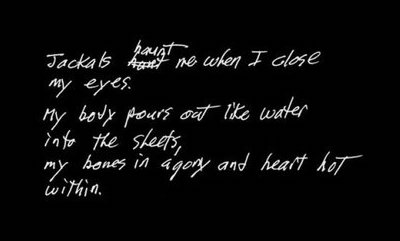
©Tom Griggs, detail from A Creature Obeys a Creature That Wants. The text reads: “Jackals haunt me when I close my eyes. / My body pours out like water into the sheets, / my bones in agony and heart hot within.”
VI: Your use of the word “creature” in the title intrigues me as well. … Can you tell me more about how it came to be?
TG: The book — as has happened to me with other books — had another working title for much of the process. From my experience, a title is one of the last things to fall into place with a book. And it makes sense: one has to see the full scope of the book and to know it intimately before knowing what title would be most appropriate.
So during the process of working on the book, I always had an ear open for other title options. One day while I was living in Mexico City during the pandemic, I was listening to a podcast on philosophy, and one of the hosts quoted Montesquieu on living under despotism. The full original quote is, “Man is a creature that obeys a creature that wants.” It struck me, and the more I thought about it, the more it fit as the book title in a modified form.
The title posits a duality which the reader can think about in the form of a riddle. What are these two creatures, one obeying another? Is it God and humanity? Father and son? Mind and spirit? All of the above, and therefore the title is rather a statement on the complicated dynamics of power in any relationship?
I have my own understanding of the title, but it feels to me that to state it would be a way to guide the reader more strongly than I would like to, and so I’ll just leave the questions open!
VI: “To endure is easier than to turn the page.” Does this teaching your father got from your grandparents also resonate with you as well? And has it played a role in your creative practice?
TG: It does resonate with me as a warning, as it did for my father, a teaching of the risks of enduring for its own sake.
I grew up to have pride in “stick-to-it-iveness,” in fulfilling my obligations, in perseverance. One of our superpowers as humans is adaptivity to a vast range of circumstances. This can be a strength when it gives us a capacity to endure hardship when necessary, but like many strengths, it becomes a weakness when unchecked, and we slide into enduring just to endure. Only with time did I learn this darker side of the teaching as given to me, and how it can also keep one from moving on from an unhealthy situation, whether because it’s the path of least resistance, or because we don’t want to ruffle feathers or worry those that care about us.
In my creative practice, I think it has had a small role, largely in allowing me to better move beyond the “sunken cost fallacy” and to be at peace dropping images from an edit, even entire projects, as the prudent course when necessary, no matter how much I’ve invested in them.
VI: I love how the final part of the book relies more on archival images. It speaks to the physical act of remembering and going through the family album. Can you discuss your rationale behind the selected photographs and how they complement the written story?
TG: Sure. The final set of images after the main, epic prose are presented, as you say, more akin to a photo album. Because of this, they are largely family snapshots, some manipulated in small ways. The were chosen for how they pick up on major book themes and for their range of portrayals of the relationship between myself and my father, from reverence to struggle together, to looking out at the ocean side-by-side in the last image, a reference back to the first chapter of text and to the core metaphor of descent into the ocean representing descent into depression.
Similar to what I mentioned earlier about the handwritten texts and the prose creating two different textures within the book, perhaps we could think of these final images in the same way as adding a second visual register to the book that complements the first section of the book of more formally considered images produced for an artistic context.
My hope is that both sets of images run parallel to the written story, and deepen the experience of the narrative by filling in the space in and around the text as opposed to more thinly and simply illustrating the text.
VI: Following this section, in your book’s coda, you explore a desire to understand the roots of your father’s struggles. Did you experience any moments of realization about the source of your personal challenges during this process? If so, could you share one that resonated with you the most?
TG: Definitely. I always knew my Dad had been hospitalized a couple of times with severe depression, but I didn’t understand the why – why had this happened to him? Then, just before beginning this book, I went through a season of personal precariousness, navigating a divorce and the deep changes that it brought to my life. Then we entered into the pandemic.
I made this book, then, to better understand my Dad’s story and to retell it in a way that got to the question of why. This, I hoped, would be a way to be vigilant about the risk that I might be repeating decisions that had made him ill, or that maybe I was succumbing to larger family patterns that had lead multiple family members into struggles with their mental health.
For me this has been the personal value of making the book and engaging with its content. I can see much more clearly the straight-line inheritance of my paternal grandparent’s pathologies, a toxic mix of anxiety from my grandmother and radical valuations of achievement, justice, and strict moral codes from my grandfather. My paternal grandparents were loving people, but a cocktail of personalities that for my father, and to a lesser degree myself, created issues that we have needed to deal with as adults.
As a believer that the quickest way to the universal is through the detail, I hope that the book, by sharing my father’s story, might help others to also see their own stories in different ways, through different light. I would love to believe that the book can offer a space for reflection on the question of how our sense of self is constructed, and what can happen if that sense of self is misshapen by the forces that forged it.
Posts on Lenscratch may not be reproduced without the permission of the Lenscratch staff and the photographer.
Recommended
-
Paccarik Orue: El MuquiDecember 9th, 2025
-
Kinga Owczennikow: Framing the WorldDecember 7th, 2025
-
Richard Renaldi: Billions ServedDecember 6th, 2025
-
Ellen Harasimowicz and Linda Hoffman: In the OrchardDecember 5th, 2025
-
Linda Foard Roberts: LamentNovember 25th, 2025

